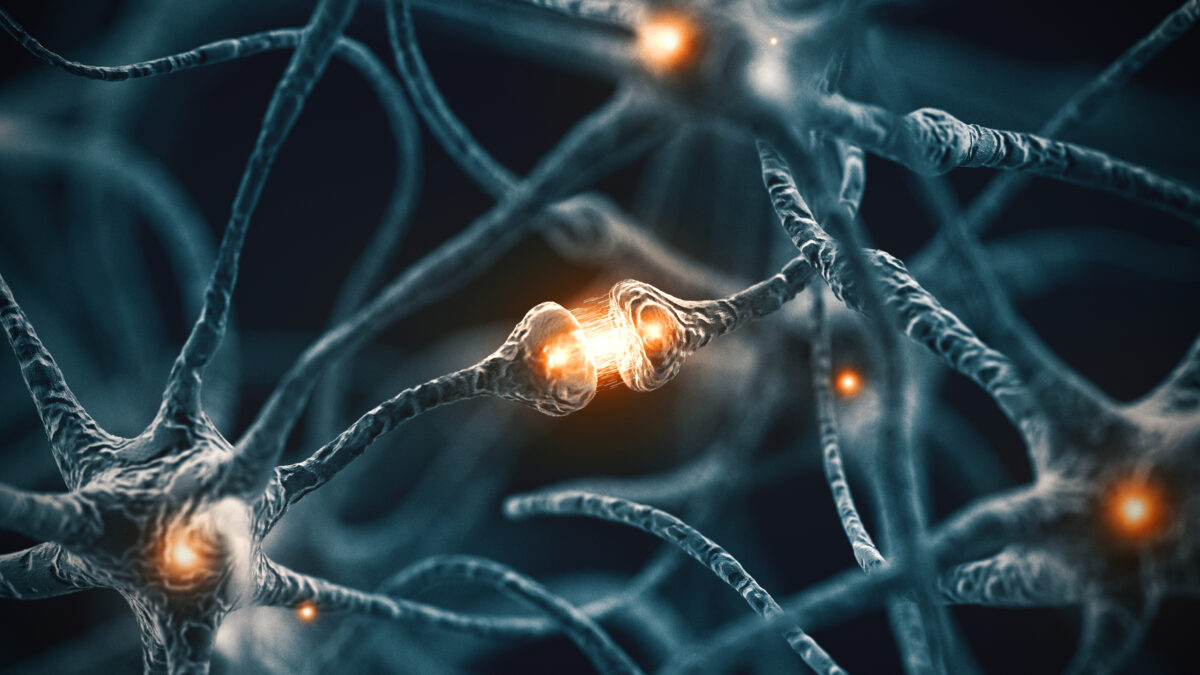The Effect of Propofol on Neurotransmitters

Loss of consciousness (LOC) is a medical event characterized by a disruption in someone’s awareness and responsiveness to their environment. Anesthesia providers often intentionally induce LOC during surgical procedures using anesthetics such as propofol. Decades of research have aimed to shed light on the neural mechanisms behind anesthesia-induced LOC, including the associated neuroanatomy and neurotransmission. Studies suggest that propofol, a widely used anesthetic, exerts its effects via the neurotransmitters dopamine, GABA, and glutamate.
Propofol is a well-established intravenous anesthetic known for its smooth induction, rapid terminal half-life, and low incidence of postoperative nausea and vomiting.1 Dynamic causal modeling of neural activity suggested that propofol-induced LOC impaired backward connectivity from frontal to parietal cortices. Additional Bayesian model selection alluded that backward connectivity in higher-order associative cortical regions may be a crucial bottleneck for conscious awareness.2 Through an in-depth analysis into these higher-order associative areas, studies found the prefrontal cortex (PFC), and especially the medial prefrontal cortex, displayed significant changes in neurotransmission during anesthesia induction and emergence. As such, it is suggested that propofol induces LOC at least partially through impacts on the PFC.3
Studies on nicotine abuse have demonstrated the impact of dopamine firing in the ventral tegmental area (VTA) on the modulation of extracellular dopamine levels in the PFC. In a 2016 study, researchers performed in vivo and in vitro analysis on 90 rats, including observation, microdialysis, and histology. Intravenous administration of propofol and the subsequent LOC caused a significant increase in the PFC levels of the dopamine metabolite 3,4-Dihydroxyphenylacetic acid (DOPAC), while decreasing the PFC levels of dopamine neurotransmitters (NT). Both DOPAC and dopamine NT levels returned to baseline after emergence from anesthesia. Therefore, it is proposed propofol induces LOC through facilitating the catabolism of dopamine NT into its metabolite, DOPAC, in the PFC.4
Since propofol is known to exert its anesthetic effects through the inhibitory neurotransmitter GABA, the above researchers blocked the GABAA receptors in the PFC and found delayed induction of LOC and hastened emergence from LOC. Since blocking GABA reduces (but does not eliminate) the effect of propofol, these results indicate propofol induces LOC at least partially through the GABA neurotransmitters and GABAA receptors in the PFC.4
In early 2009, 10 healthy human volunteers (aged 20- 40) participated in a noninvasive magnetic resonance spectroscopy study. At a propofol injection concentration of 1.5 μg/ml, subjects began showing sedative qualities; by 3.0 μg/ml, they lost consciousness. During LOC, the researchers observed significantly decreased levels of glutamate, the brain’s primary excitatory neurotransmitter, in all patients, along with up-regulated levels of GABA.5
The effects of propofol on neurotransmitters during loss of consciousness highlight the drug’s profound effect on neural activity. By modulating critical neurotransmitters like dopamine, GABA, and glutamate in the PFC, propofol can induce LOC, which is essential for various medical procedures. Understanding these pharmacological mechanisms not only enhances our ability to use propofol safely and effectively, but also provides invaluable insights into the neural processes underlying consciousness. Continued research in this area is key to advancing anesthetic practices and improving patient outcomes.
References
- Sahinovic, Marko M., et al. “Clinical Pharmacokinetics and Pharmacodynamics of Propofol.” Clinical Pharmacokinetics, vol. 57, no. 12, Dec. 2018, pp. 1539–58. https://doi.org/10.1007/s40262-018-0672-3
- Boly, Mélanie, et al. “Connectivity Changes Underlying Spectral EEG Changes During Propofol-Induced Loss of Consciousness.” Journal of Neuroscience, vol. 32, no. 20, May 2012, pp. 7082–90. https://doi.org/10.1523/JNEUROSCI.3769-11.2012
- Leon-Dominguez, Umberto, et al. “Molecular Concentration of DeoxyHb in Human Prefrontal Cortex Predicts the Emergence and Suppression of Consciousness.” NeuroImage, vol. 85, Jan. 2014, pp. 616–25. https://doi.org/10.1016/j.neuroimage.2013.07.023
- Wang, Yuan, et al. “Effects of Propofol on the Dopamine, Metabolites and GABAA Receptors in Media Prefrontal Cortex in Freely Moving Rats.” American Journal of Translational Research, vol. 8, no. 5, May 2016, pp. 2301–08. https://www.ncbi.nlm.nih.gov/pmc/articles/PMC4891442/
- Zhang, Hui, et al. “Effect of Propofol on the Levels of Neurotransmitters in Normal Human Brain: A Magnetic Resonance Spectroscopy Study.” Neuroscience Letters, vol. 467, no. 3, Dec. 2009, pp. 247–51. https://doi.org/10.1016/j.neulet.2009.10.052
